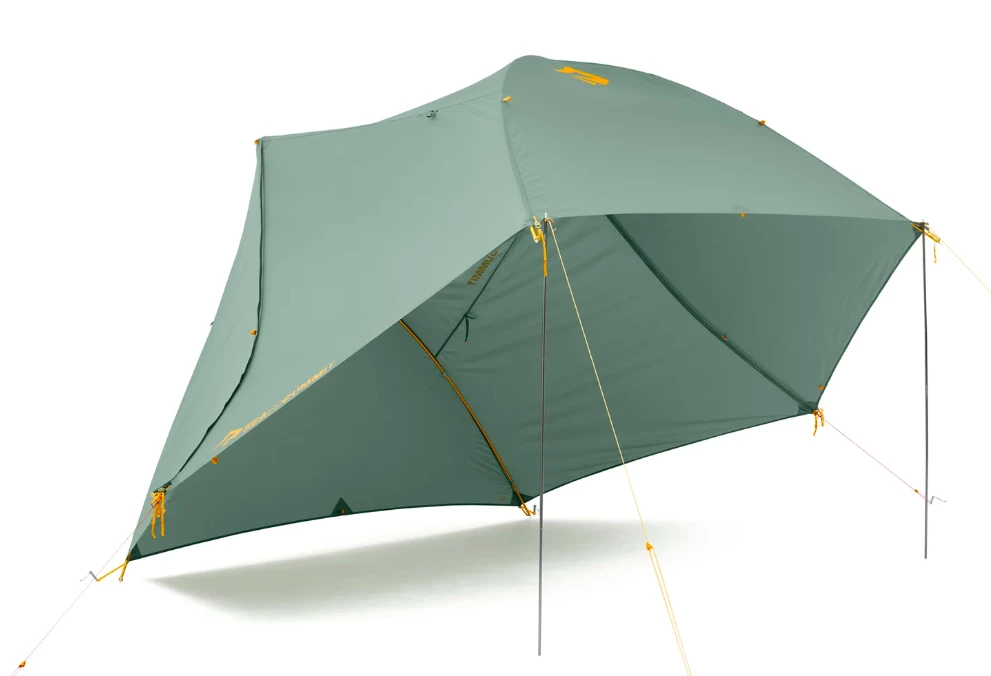Sea to Summit announced its entry into the tent market two years ago when it introduced the innovative, space-enhancing Telos and Alto Tension Ridge (TR) backpacking tents. It has since added to the lineup with 3+ season models and a more frame-friendly Telos bikepacking tent. Now it grows the Tension Ridge family once again with the Ikos. Available in two- and three-person sizes, the Ikos TR features a rugged, roomy construction and a flexible design that can be pitched as a full tent or an open-air daytime "hangout."
Since launch, Sea to Summit's tent line has been all about helping backpackers and adventurers find just the right balance of lightweight packability, interior living comfort, reliable durability and accessible pricing. The Ikos reworks the formula slightly in favor of backpackers and vehicle campers who are counting dollars just as closely as they're counting ounces. The tents aren't as lightweight or compact as their Telos counterparts but they bring a slightly burlier build and a similar feature set at a lower price point.
Like the Telos, the Ikos is a freestanding tent that benefits from Sea to Summit's signature Tension Ridge, an extra wing-like top pole that lifts the dome roof higher to increase headroom and interior volume. The pole also serves as the foundation of a wide vent in the rainfly, helping to keep hot air moving out to prevent condensation. Campers can tweak airflow by opening and closing lower "baseline vents."

The Ikos' floor areas are slightly larger than those of the Telos series, designed around fitting two (or three) standard rectangular sleeping mats side by side. The Ikos TR2 floor offers 31.2 sq ft (2.9 sq m) of space, and the Ikos 3 sizes in at 49.2 sq ft (4.6 sq m).
Sea to Summit increases the Ikos' overall robustness with heavier fabrics, using a 68-denier ripstop nylon tub floor and rainfly and a 20-D poly mesh body in place of the lighter 20- and 15-D ripstop/15-D mesh Telos build. It also swaps in stiffer, heavier DAC MX aluminum poles in place of the Telos' Featherlights.
One feature that's always set the TR line apart from other backpacking tents is its multiple set-up options. "Hangout" mode, in particular, stands out, allowing owners to create a sun shelter for day use, making the Ikos just as useful for a day at the beach or music festival as it is on a weeklong backpacking trip.

"Fly only" mode allows campers to pitch the fly first and break it down last, reversing the process via which one would usually pitch a tent. This helps keep the main tent floor and body dry in inclement weather.
For camping couples and trios who sleep at different temperatures, "partial fly" mode leaves roughly half the tent fully open and ventilated while covering up the other half.

The Ikos TR2 weighs 4.8 lb (2.1 kg) when packed into its 7 x 20-in (18 x 51-cm) carry sack, while the Ikos TR3 weighs 6.5 lb (2.9 kg) packed into an 8 x 20-in (20 x 51-cm) sack. The video below shows how the tents find use for a family adventure in the superlative mountains of New Zealand.
Sea to Summit launched the Ikos series this week. The TR2 retails for US$429, and the TR3 slots in at $529.
Source: Sea to Summit











